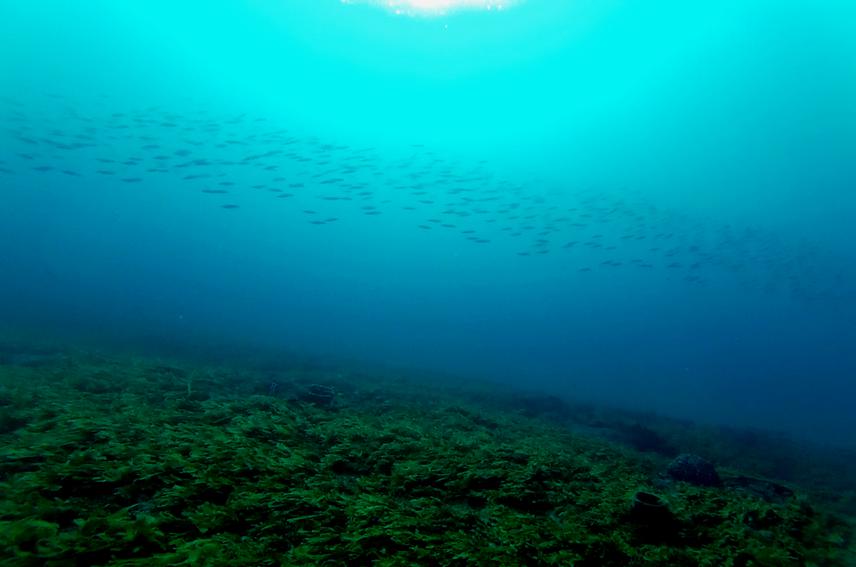Brent Chiazzari
The aim of the project is to do a genetic and morphological analysis on the south American pilchard.
The ecological phenomenon known as the ‘Sardine run’ occurs annually when large schools of sardine (Sardinops sagax) migrate en masse from the Agulhas bank off the southern African coastline towards KwaZulu-Natal (KZN). The sardine run usually begins with the migration of the sardine and its bird, fish and cetacean predators into the waters surrounding Port St. Johns in late May. The large “pockets” of sardine continue up the coast, and if suitable conditions prevail, they will move into KZN, and have been known to move as far up the coast as the Durban Bight. The shoals of sardine then quickly disappear offshore usually in late July to August, and most sardine are thought to return to the Agulhas bank by early summer.

Sardine shoal.
This seasonal and rather unpredictable event supports a beach seine-net fishery on the KZN coast, and also as a focus of international ecotourism. Its fame has caused it to be labelled as The Greatest Shoal on Earth; a bit colourful but nevertheless an indication of its importance.
The Sardine Run has been the point of recent investigation, resulting in an accurate description of the nature and mechanisms resulting in the Annual event. Nevertheless, certain critical questions about the nature of the sardine run still remain unanswered, most importantly, why do sardine undertake this movement up the east coast.
Genetic and morphological analysis can be especially valuable in testing the above hypothesis, where broad scale structuring among the sardine found on the east and south/ west coast may be determined. Finer scale connectivity and population structure amongst sardine within the sardine run may also be determined via genetic analysis. Genetic structuring of the sardine will allow one to test the current hypotheses thought to be the cause of the sardine run. Freon et al (2010) concluded that the most likely explanation was that KZN sardines formed part of a sub-stock that return to their natal spawning grounds during favourable conditions in winter. These analyses, which serve as this project’s primary objectives, are imperative to uncovering the nature of the sardine run and the delineation of potential population level sub-stocks.
Correct fishing models are important for the longevity of the Sardine run as an ecological phenomenon and to sustain its economic value. The outcomes of this study have direct implications for the way the South African Sardine fishery is currently managed. If the Sardine populations are found to be a large interbred population, it would mean that any change in the cape fishery would have a direct impact on the ecology of the Sardine run and the beach seine-net fishery it supports in KZN. Conversely, if it were found that the stock was divided into the KZN and Cape stock, the current single stock fishery model would have to change to accommodate the stock structure of the KZN and Cape (possibly more than one population in the cape). This would almost certainly force the separation of the Sardine stock into independently monitored stocks. The degree to which the sardine population differentiates may vary, and it will be up to fisheries management to carefully decide on appropriate action.
Ecologically, the sardine run is an important phenomenon, which is defined by an increase in biomass of sardine and the predators that feed on them. Myeza et al. (2010) estimated that the socioeconomic value of the sardine run and its related activity amounts to 34-54 million Rand (2.4-3.9 million British pounds). Thus, with the ecological and socioeconomic value of the sardine run, new data provided by this study will certainly be useful, considering the importance and vulnerability of the Sardine run in South Africa.